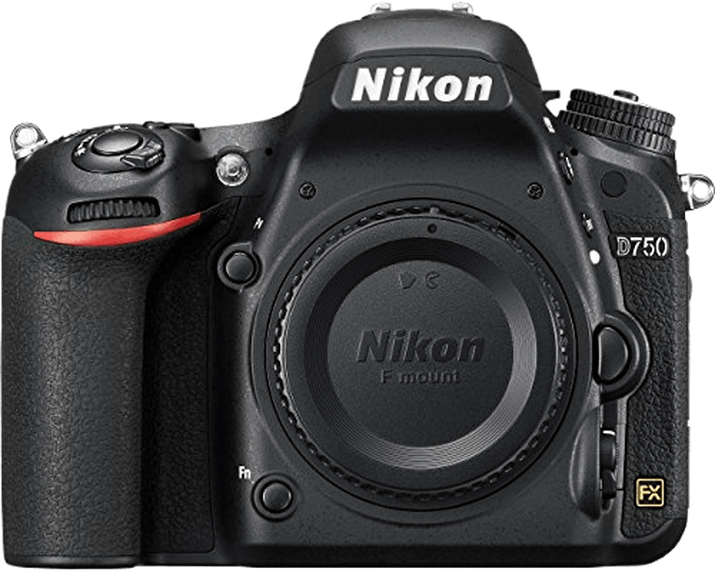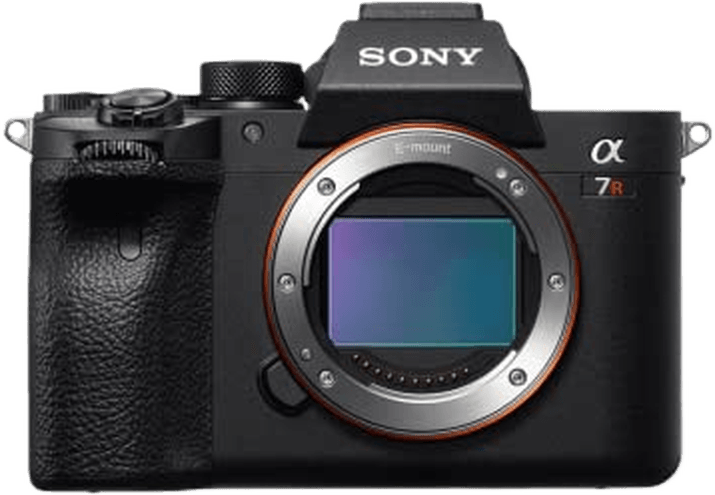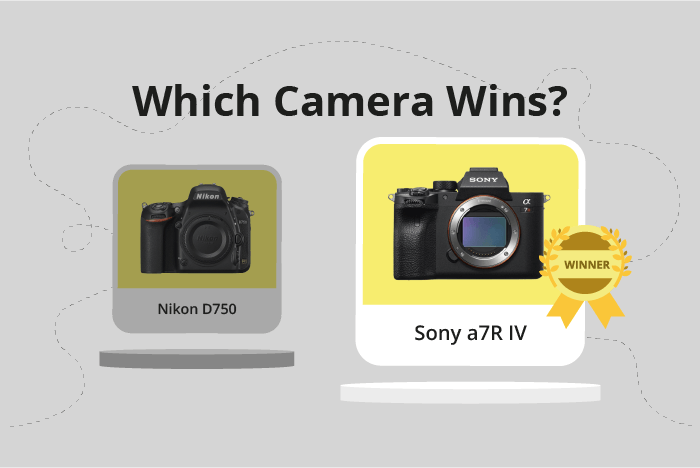Nikon D750 vs Sony a7R IV Comparison
Nikon D750

Sony a7R IV

The Sony a7R IV outperforms the Nikon D750 with a score of 84 to 68. Both cameras share similarities, such as their announcement dates and launch prices in 2014 and 2019, respectively. They also have comparable sizes, with the Nikon D750 measuring 141 x 113 x 78mm and the Sony a7R IV at 129 x 96 x 78mm.
The Sony a7R IV has the advantage of being a mirrorless camera, which contributes to its lighter weight of 665g compared to the Nikon D750’s 750g. This makes the Sony model more portable and convenient for photographers.
On the other hand, the Nikon D750 is a DSLR camera, which some photographers may prefer due to its optical viewfinder and longer battery life. However, the Sony a7R IV’s higher score indicates that it offers better overall performance and features.
Taking all factors into account, the Sony a7R IV is the superior camera, but the Nikon D750 still has its merits, especially for those who prefer DSLR cameras.
Nikon D750 vs Sony a7R IV Overview and Optics
The Sony a7R IV outperforms the Nikon D750 in optics with a score of 85/100, compared to the D750’s score of 71/100. Both cameras share some common specifications, such as a CMOS sensor, full-frame sensor size, and compatibility with a variety of lenses through their respective lens mounts: Nikon F FX for the D750 and Sony FE for the a7R IV.
The Sony a7R IV excels with its impressive 61.2-megapixel resolution, significantly higher than the Nikon D750’s 24.3 megapixels. This allows the a7R IV to capture more detail and produce larger prints. Additionally, the a7R IV boasts a faster shooting speed of 10 frames per second, compared to the D750’s 6.5, enabling it to capture fast-moving subjects with greater ease. The a7R IV’s sensor also has a higher DXOMARK score of 99, compared to the D750’s 93, indicating better overall image quality. Furthermore, the a7R IV comes with image stabilization, a feature absent in the D750, which helps reduce camera shake and blur in images.
On the other hand, the Nikon D750 has the advantage of the widely compatible Nikon F FX lens mount, which offers access to a vast selection of lenses. This could be beneficial for photographers who already own Nikon lenses or prefer the Nikon lens lineup.
In terms of optics, the Sony a7R IV clearly outshines the Nikon D750 with its higher resolution, faster shooting speed, better sensor score, and image stabilization. However, the D750’s compatibility with the extensive Nikon F FX lens lineup may still appeal to some photographers. Ultimately, the choice between these two cameras will depend on individual preferences and priorities in terms of image quality, shooting speed, and lens selection.
Nikon D750 vs Sony a7R IV Video Performance
The Sony a7R IV outperforms the Nikon D750 in video capabilities, with a video score of 70, while the D750 scores 56. Both cameras have certain shared specifications, such as Full HD video resolution and a maximum video frame rate. However, the Sony a7R IV exceeds the Nikon D750 in specific areas, making it the superior choice for video recording.
Both cameras offer Full HD video resolution, but the Sony a7R IV also provides 4K video resolution, giving it an advantage over the Nikon D750. The maximum video dimensions for the Sony a7R IV are 3840 x 2160, while the Nikon D750 has a maximum of 1920 x 1080. This difference allows the Sony a7R IV to capture higher quality videos with more detail.
The maximum video frame rate for both cameras is 60fps; however, the Sony a7R IV achieves this at Full HD, while its 4K video is limited to 30fps. In contrast, the Nikon D750 can only reach 60fps at its maximum resolution of 1080p. The Sony a7R IV also has built-in time-lapse functionality, which the Nikon D750 lacks.
The Nikon D750 does not have any significant advantages over the Sony a7R IV in terms of video capabilities. Its lower video score reflects its limited features compared to the Sony a7R IV.
The Sony a7R IV is the clear winner in this comparison, offering superior video resolution, dimensions, and time-lapse functionality. The Nikon D750 falls short in these areas, making it a less desirable choice for videographers.
Nikon D750 vs Sony a7R IV Features and Benefits
The Sony a7R IV outperforms the Nikon D750 in features, scoring 83/100 compared to the D750’s 59/100. Both cameras share some similarities, including a flip screen, the absence of GPS, and Wi-Fi capabilities. However, the a7R IV surpasses the D750 in several aspects, making it the superior camera in terms of features.
The Sony a7R IV has a touchscreen, while the Nikon D750 does not. This feature allows for easier navigation and control of the camera. Additionally, the a7R IV boasts a higher screen resolution of 1,440,000 dots compared to the D750’s 1,229,000 dots, resulting in a clearer and more detailed display. Furthermore, the a7R IV includes Bluetooth connectivity, enabling seamless connection to external devices, an option that is missing in the D750.
In contrast, the Nikon D750 has a slightly larger screen size at 3.2 inches compared to the a7R IV’s 3 inches. This difference may provide a marginally better viewing experience for the D750 user. However, this advantage is minimal in comparison to the a7R IV’s additional features.
Taking into account the shared specifications and the additional features of the Sony a7R IV, it is evident that the a7R IV is the superior camera in terms of features. The touchscreen, higher screen resolution, and Bluetooth connectivity make the a7R IV a more versatile and user-friendly option. While the Nikon D750 has a marginally larger screen, it does not outweigh the benefits offered by the a7R IV.
Nikon D750 vs Sony a7R IV Storage and Battery
The Nikon D750 and Sony a7R IV tie in storage and battery with a score of 79/100. Both cameras possess two memory card slots and accept SD, SDHC, and SDXC cards. However, the a7R IV is compatible with UHS-II cards, providing faster read and write speeds.
The Nikon D750 outperforms the Sony a7R IV in battery life, offering 1230 shots per charge compared to the a7R IV’s 670 shots. The D750 uses the EN-EL15 battery, while the a7R IV uses the NP-FZ100. This longer battery life makes the D750 more suitable for extended photography sessions.
Conversely, the Sony a7R IV has the advantage of USB charging, allowing for more convenient charging options. This feature can be useful for photographers on the go or those without access to a dedicated battery charger.
Taking these factors into account, the Nikon D750 is the stronger choice for those prioritizing battery life, while the Sony a7R IV is ideal for those seeking faster memory card compatibility and convenient USB charging.
Nikon D750 vs Sony a7R IV – Our Verdict
Are you still undecided about which camera is right for you? Have a look at these popular comparisons that feature the Nikon D750 or the Sony a7R IV:

